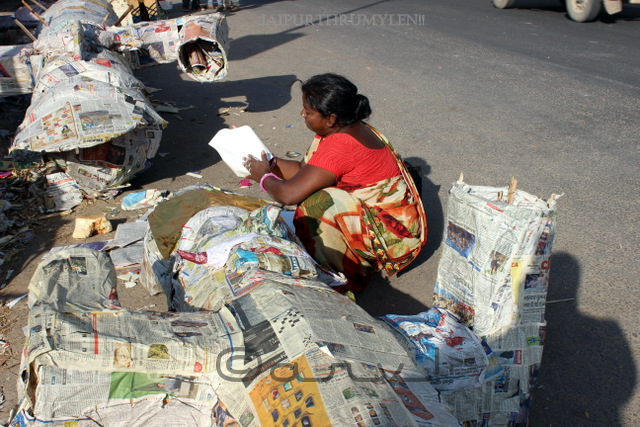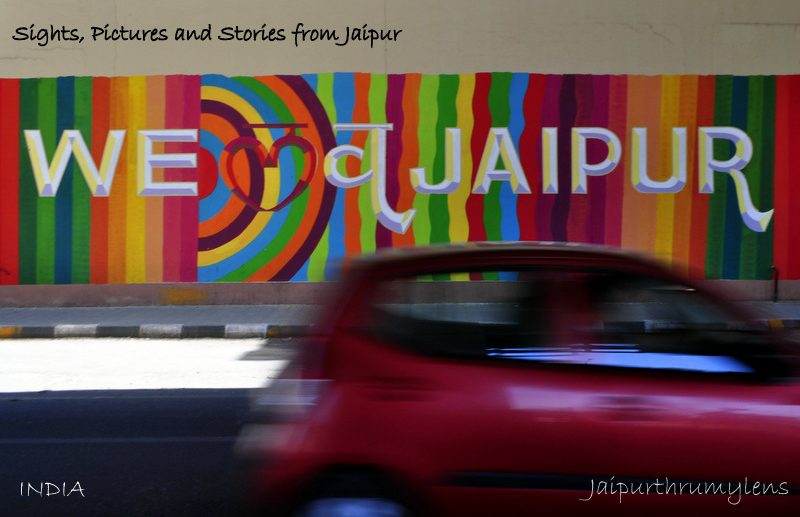Jaipur celebrates all festivals with vigor and fanfare including Dusshera or Vijayadashami. Dusshera is an Indian festival celebrated at the start of the festive season before Diwali. It is also known as Vijayadashami since it falls on the tenth day of Ashwin, a month in the Hindu calendar. This festival is associated with the winning of good over evil and is celebrated with the burning of an effigy of Ravana with fireworks. In India, the most famed Dussehra celebrations are at Mysore called Mysore Dassara. Dussera celebration in Jaipur is well-known and many tourists travel during Dussera season to experience the festive spirit in the city.

Who was Ravana?
Ravana/ Rawan/ रावण was the prime antagonist in the Hindu mythological story of Ramayana. Ravana is considered as an able king from Sri Lanka and had ten heads. He abducted the wife of Rama, the chief protagonist of Ramayana. As per Hindu mythology, Ravana is associated with evil and Rama with the truth.
Also Read: Will Diwali shine on people this year?

For years, people in Jaipur would congregate at community grounds where a huge effigy of Ravana would be alighted to mark the end of evil – killing of Ravana. Over the years, a new trend has emerged. Now people buy effigy of Ravana to burn it themselves. This has opened up a huge market to sell Ravana effigy. Jaipur has many such places where vendors, usually the makers themselves sell effigy to people. Such places are called Ravana Mandi.


Mandi means market in Hindi. The largest Ravana Mandi in Jaipur is at Mansarover. The roadside is lined with hundreds and thousands of Ravana effigies.

I recently visited a Ravana Mandi in Jaipur to get a first-hand experience. Newspapers reported a big fall in making & selling of Ravana effigies this year due to the downturn in the economy. The sellers attribute it to the Demonetization in 2016 and the recent introduction of GST which led to increased input costs.

Vendors I spoke to said that they start making effigies a month before Vijayadashami. Most of them are from nearby state Gujarat and sell bed sheets and clothes to earn their living.

Ravana effigies start at Rs 400 ( US$6 at current exchange level) for a small one & going all the way to a hundred thousand Rupees for 20-30 feet one. Usually, people buy Ravana on the insistence of kids who are excited to burn an effigy. Some buy a big one to celebrate Vijaydashmi in their community or society.
Also read: What makes Jaipur one of the best place to celebrate Diwali in India?





Also Read: Will Diwali shine on people this year?
On the positive side, it provides an earning opportunity for poor people. But my concern is the pollution created by burning of Ravana effigies. Also, how long will we continue to do such things? Why can’t we burn the evil in us – humans?

My thoughts? I think humans have a duality. We must accept that we have an evil side too. Probably, we will never be able to eradicate it. Our best efforts will mitigate some of it. Then why create a false show of burning Ravana effigy?
Do let me know your thoughts about Ravana Mandi in Jaipur!
Also read: What makes Jaipur one of the best place to celebrate Diwali in India?

Stay updated with Jaipurthrumylens!! on Facebook Twitter Instagram Google+



very nice interesting and informative post about ravana thanks for sharing
LikeLike
Happy to know that you liked this post, Pushpendra 🙂
LikeLike
This is such a colourful festival and one that is obviously very popular with people. I’d never heard of it, so thank you for sharing.
The production of effigies looks like ‘big business’ in some areas and people evidently love the idea of burning evil. The event (like Guy Fawkes Night in the UK) has its meaning in stories from the past, and people love to keep them alive, whether they are based on historical or religious events or myths. Like Guy Fawkes Night, this event raises environmental and safety concerns – and it may well lose interest over the years – but as you say, it also has the positive effect of providing employment to people. Great photos, Arv.
LikeLiked by 1 person
Millie, I think we have two sides to …everything! But I’m sure if we want… some compromise can be reached! Dussera is celebrated just a few days before Diwali. I’m guessing you have heard about Diwali festival! Have you, Millie?
LikeLike
Wowwie
LikeLiked by 1 person
😃
LikeLiked by 1 person
🙂
LikeLiked by 1 person
Few weeks before the festivities begin! 🙂
LikeLiked by 1 person
😊
LikeLiked by 1 person
Ravana Mandi – I never heard about this. Its so interesting to know .
LikeLiked by 1 person
I know it is not a common name that we usually come across. Do you know that there’s even Doodh Mandi in Jaipur?
LikeLike
I am learning a lot from you Arv. Doodh mandi name is also new for me 😊
LikeLiked by 1 person
We all are learning… everyday, Rekha. I was also unaware about these places in my city. Will share link of doodh mandi for you to check out.
LikeLike
True 😊😊!!! Ok . Thanks for the link.
LikeLiked by 1 person
😊
LikeLiked by 1 person
This is the first time I heard of Jaipur, and I have to say this is a very interesting place to visit. I wish I can visit this place one day. Thanks for sharing this! I do love your shots as well!
LikeLiked by 1 person
Hi Jonathan. Happy to hear that you found this city interesting. I’m sure you will love visiting and experiencing it in person. How did you discover my blog, Jonathan?
LikeLike
Great info Arv, never knew still there is an adda for Ravan! 😀 Even though the south burning of Ravan is not a mainstream practice I have seen some here in Mangalore too but during Rama Navami time.
LikeLiked by 1 person
I have no clue with regards to Ravana burning practice followed in South or Dussehra festival except for the Mysore Dussera. I guess there is a lot of regional difference like how Kartik is worshipped in South contrary to Ganesha in North India.
LikeLiked by 1 person
You are right. They are specific to the regions and the ancient history attached to them. Just like the Dasara culture maintained in Karnataka because of the Mysore Wadiyars.
LikeLiked by 1 person
Absolutely. It is exactly this that makes travel exciting! 🙂
LikeLiked by 1 person
I remember being in India for this festival and enjoyed reading your post as a reminder.
LikeLiked by 1 person
wow! You must have found this to be a unique celebration. You were in which city?
LikeLiked by 1 person
It was very unique. we were in Aurangabad at the time. Amazing scenes.
LikeLiked by 1 person
Great! 🙂
LikeLiked by 1 person
Again an excellent post, Arv. I have never been to such a ‘mandi’ before, it looks interesting. Its seems so funny that on this day of Vijayadasami, Ravana gets so much of importance and his effigies are in high demand – just to be burned.
I so agree with your thoughts on burning the evil in ourselves. Yes, it is never possible to eradicate every ill aspect of any human but the only thing required is the urge to do it. This desire to ward off the evil within oneself will gradually bring the change. I wish that we all realise the fact and try burning the Ravana in ourselves than the effigy of this imaginary evil king.
LikeLiked by 1 person
Sarmistha, sometimes I feel we humans are only interested in showing how concerned we are whereas in reality we want to carry on with things as usual. For example, I often see many clubs organizing car rallies for raising awareness for saving environment. How ironic!
Burning Ravana does have ill effects on environment but the real issue is we are not understanding the whole idea here. I don’t think human race will ever change unless they have to!
Just for you information, we burned very few Ravana here in Jaipur because consistent rains for 2-3 days “drowned” the Ravanas and rendered them useless. While it caused financial losses to the artists who make them, but on upside, it helped our enviroment.
LikeLiked by 1 person